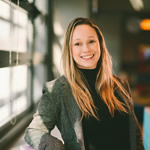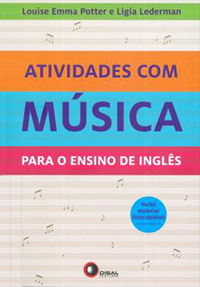By - Ingrid Puche

A few days ago, I had a Zoom call with a dear colleague of mine. Her words are still resonating in my mind, "Now, more than ever, we need to do project-based learning." I couldn't agree more that for this new - flexible learning - educational landscape, learning will be meaningful through approaches in which students' voices & choices are central for the learning and teaching process. This article shows some research about student-led approaches and classroom practices as food for thought for planning educational experiences for this current scenario.
Students' Voice & Choice
In the flexible learning scenario, student motivation can be low. By planning experiences based on students' voice and choice, educators create motivational opportunities for students to learn as they pursue their curiosities and questions. Research (BONDIE, 2018) shows that, among other aspects, motivation happens through the sense of meaning and autonomy. "Motivational theories largely assume that students are more likely to approach and engage in academic tasks when they have personal meaning to them" (BONDIE, p. 2). As students participate in the decision-making process of the investigation course, learning has the authentic purpose of solving a problem or answering a question that learners are willing to pursue.
Moreover, when starting by listening to students, educators become more conscious of students' living conditions, understanding the tools they have available, spaces they have access to at home, low-high family support, problems they might be facing, and more. By designing projects based on this collected information, a more personalized, realistic project plan is devised, creating the sense of belonging within the learning community and incorporating routines that will set students up for a successful investigation.
Find a Challenging Problem or Question
The problem the project wants to solve is usually based on student's interest and real-world questions. For this current scenario, I believe in the importance of assuring that the problem will not cause more anxiety to students. The problem might offer space for different types of initiatives that students can perform remotely.
One way of having students expressing their thoughts and questions is through activities that promote space for reflection. Simple questions such as, "What would you like to learn next about this topic?" or "How does this topic connect to your life or previous experiences?" might help to picture what problems and topics would match students' needs. Harvard's Project-Zero research suggests many thinking routines that support students in communicating their understanding and willingness for the next steps.
Plan the Project Scope & Sequence
After having a picture of students' interests, the project scope and sequence are designed. At this stage, different aspects of the project are considered: how long the project will take, cross-curricular connections, technology, and real-world interfaces. Here, there is a need for reflexive planning time, as it will be determined how students' interests and curricular goals connect. Teachers from different disciplines draw a big picture of how content will be integrated into the investigation.
Set Cross-curricular Connections
As Hernandez (2017) points out, project-based learning provides meaningful learning because it sets the need for making cross-curricular connections in order for learners to solve a given problem or question. Students learn how to solve a problem by exploring different areas of knowledge; they learn by doing. The teacher's role in such an approach is to actively listen to students' needs and, based on them, create curricular and real-world connections that will broaden learners' social, cultural and academic skills.
An integrated curricular practice also aims to support students how to act upon knowledge. As students are working from home, they must learn how to study independently, which involves not only academics but also learning procedures, from the simplest to the most complex: how to set up a workspace, how to set up a schedule for schoolwork, how to use a notebook to research, how to use a dictionary to find a word, which materials to use to document learning, and more. As the project evolves, these learning experiences must be considered in the planning, aiming to support students developing autonomy.
Ongoing Assessment: Focus on the Process not Product
The assessment in a project is ongoing and happens during all the inquiry stages. Student's understanding is assessed formatively through tools such as self-reflections, written or oral responses, and the evaluation of products that represent milestones of the process. Rubrics and learning goals are designed before the project starts or co-created with students as they evaluate the models they are studying. For this current scenario, learning expectations have to be realistic about what is possible to accomplish from home.
Sharing Experiences: A Project During Flexible Learning Times
A team of colleagues* and I are running a project with our 3rd graders named Songs that Tell Stories. To plan the project, first, we considered students emotional' needs, the resources and family support students had available, and grade-level learning outcomes. For the project cycle, we aimed students to have authentic interactions, feedback & reflection, a need to solve an intriguing question, and public demonstration of their milestones.
We had many doubts about which path to follow, and having space and time for grade-level meetings was essential to create a collaborative atmosphere among our team. After all, as teachers, we needed to feel safe and confident to try new things in such challenging conditions. We anticipated some challenges and also gave room for mistakes and uncertainties: how could we provide space for student voice & choice? How can we hold students accountable and make sure they are engaged? What is the best way to adapt schedules for curricular integration?
For the inquiry cycle, we started with activities related to what we've been exploring at school. During this phase, it was essential to have activities with moments for students reflecting and expressing their interests and questions about the topic. To actively listen to students, we created a Google Docs where we documented their answers, combining their interests into the project driving question.
From the inquiry cycle, we realized that we could combine what students have been learning at school to particular elements of this new scenario like family participation and a special need of social emotional learning. At school, students were exploring Brazil's identity and geography through the lens of music and other cultural representation. Now, they showed interest in learning not only about Brazil's history, but also their families'. Based on that, we started an investigation that aims to understand how their families' history connects to what makes Brazil, Brazil.
The activities were designed in a way that students needed to learn to solve their questions. For instance, to discover the songs that passed through their families' generations, they had to learn how to interview a family member. To understand better who their family members are and where they come from, they had to learn how to research their genealogy. The activities always included feedback & reflection cycles, where they could go over checklists for self-assessment and peer review.
For authentic interaction and public demonstration we've been using synchronous platforms such as Zoom and asynchronous apps such as Padlets and Flipgrid, where students can post videos, audios, images and have feedback from their peers.
Our project is still happening, and lessons were learned: most important, make it meaningful, but keep it simple. Building the project in a way that students use their previous experiences, make meaningful connections and continue motivated to learn and pursue their questions, knowing that their teachers and peers are there for them.
Final Words
This article presents some insights from research on student-centered learning and classroom practices. As students are physically distant from their peers, teachers, and school, it becomes even harder to connect with them without taking into consideration their background and interests. They must see meaning in what they are doing and feel they belong to a community in order to continue motivated. Learning is about affection, making connections, and memories, too. So, I keep asking myself: what kind of memories do we wish students to take from this experience?
● A special thanks for all the 3rd grade teachers from Avenues: the World School involved in this project.
Bondie & Zusho. Classroom Routines, Motivation, and Effective Learning. In: Differentiated Instruction Made Practical: Engaging the Extremes through Classroom. 2018
HERNÁNDEZ. A globalização: um caminho entre a teoria e a prática. In: A organização do currículo por projetos de trabalho: o conhecimento é um caleidoscópio. Tradução: Jussara Haubert Rodrigue. 5a ed. Porto Alegre: Penso, 2017.
Ingrid Puche é especialista em Educação Bilíngue: desafios e possibilidades pelo Instituto Singularidades e em Desenvolvimento infantil e Método Montessori pelo Montessori Accreditation Council for Teacher Education - MACTE. É Bacharel e licenciada em Letras - Inglês e Português pela Universidade de São Paulo (USP) e Pedagogia. Se dedica aos estudos sobre educação bilíngue, pedagogia de projetos e metodologias ativas participando de pesquisas e congressos. Atualmente, é professora do Ensino Fundamental I na Avenues: The World School e professora do curso de pós-graduação Metodologias e Práticas para Educação Bi-multilíngue no Instituto Singularidades.
LIVRO RECOMENDADO
